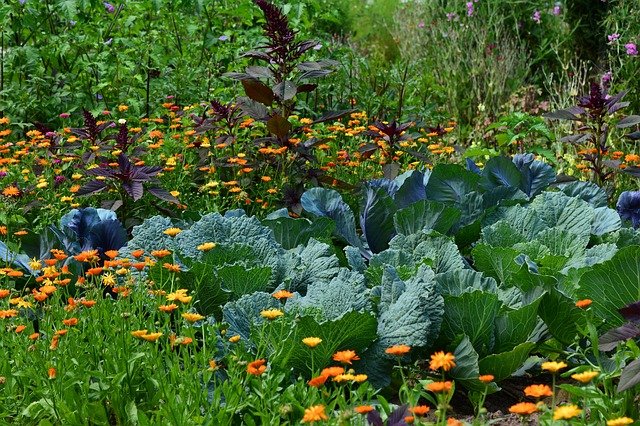The falling leaves at the foot of the trees, changing colors from lush green to vivid yellow and rich golden, the bright rays of the sun, filling the sky with a gradient of red, orange, and yellow, is an extraordinary gift given to us by nature known as Autumn.
It marks the end of summer and serves as the first hint of winter. This shows us a new face of nature, turning everything from shades of green to a radiant yellow palette. It reminds animals to fill their food supply and prepare themselves to migrate or hibernate. On the other hand, it is a perfect time to start growing your vegetables and fruits in the garden.
Like a Christmas tree lavishly decorated, the splash of yellows, oranges, and greens sprouting in your garden adds beauty to the place. Looking for vegetables to color your yard this fall? Head’s up. Here are some of the best you might want to consider planting:
Cauliflower
Like most vegetables, cauliflowers need exposure to sunlight, fertile, moist soil, and must be watered adequately. It is usually planted in the spring, but cauliflower can grow in the fall, too. Unlike its relative plants, they are known to be temperamental crops, requiring consistent cold temperatures that range from 60-65 °F (16-18 °C).
Quite a challenge for first-timers, but once you get familiar with the technicalities, you’ll discover that it’s not that difficult after all. White is the popular variety, but they also come in green, orange, or purple. These colored ones are high in antioxidants.
Cabbage
This cruciferous vegetable likes temperatures between the ranges of 55-75°F (13-24°C) to 60-70°F (16-21°C) and is, therefore, great to plant in the fall. They also require fertile soils with a pH range of 6.5-7.5 and should be consistently watered while it grows. Cabbages contain chemicals that may help protect you against radiation, cancer, and even heart disease.
They can vary in color, from green to red and purple, depending on how acidic or basic its soil is.
Carrots
These root vegetables usually mature and are ready to harvest around 70 to 80 days from its planting time. You can use succession planting when growing this kind of plant to keep your garden in the harvest and avoid unproductive areas.
The orange-colored carrots are high in beta-carotene, which, when in the body, converts to the vitamin that is good for the eyes, Vitamin A. But did you know that before the 15th or 16th century, they were purple or yellow? Contrary to popular beliefs, carrots do come in different colors.
Broccoli
Broccoli also thrives in cold weather and usually comes to harvest in 100 to 150 days but can also be harvested earlier when grown from transplants. They resemble a miniature tree and can be eaten raw, which helps preserve certain sulforaphane levels, or cooked, usually steamed or boiled, that help preserve its antioxidant but lowers Vitamin C content.
The best broccolis should be deep green. Don’t let them turn yellow. It’s not that it is bad for your health, but mostly because it will not taste good if it does.
Beet
Also known as beetroot, red beet, table beet, or garden beet, this veggie is ideal for growing in the fall season, too, as they are hardy plants that respond favorably to cool conditions. They are already delicious when eaten raw, but some also prefer to cook or turn them into pickles. Their green leaves are also edible.
They have a unique incandescent tinge of red and fall beets contain stronger colors than those planted in spring.
Leek
Leeks can tolerate temperatures between 55° and 75° F. Above this range, growth slows down. This cultivar vegetable belongs to the Allium genus, together with its onion, garlic, and chive relatives. The long, white portion of its stem is the edible part of the plant.
The upper portion, which is its leaves, ranges from light to dark green, whereas its base is usually white.
Spinach
Spinach is a leafy vegetable that is originally from Persia. When planting, consider a place where the sun can shine on them or provide a partial shade. In its full bloom, you can prepare them in many ways, whether eaten raw or freshly cooked.
The bright green color of spinach is due to the presence of the green photosynthetic pigment, chlorophyll.
Onion
This edible bulb is commonly seen in the kitchen as it is usually added to most stews, soups, and meat dishes to enhance flavor. Onions grow best in loose, well-drained, nitrogen-rich soils, need a lot of sunlight, and require 90 or more days before they are ready to harvest.
When cut, these bulbs would also make you cry as they produce syn-propanethial-S-oxide, a chemical irritant. They come in different colors of white, pale yellow, orange, pink, and dark purple.
Takeaway
The autumn season may be a time when leaves wither and growth hampers, but this is not the case for every plant. Some adapt very well and can surprisingly turn your garden into a brightly colored one, even in the midst of fall.










